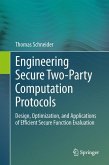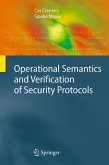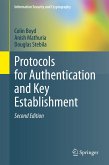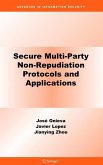In the setting of multiparty computation, sets of two or more parties with p- vate inputs wish to jointly compute some (predetermined) function of their inputs. The computation should be such that the outputs received by the parties are correctly distributed, and furthermore, that the privacy of each party's input is preserved as much as possible, even in the presence of - versarial behavior. This encompasses any distributed computing task and includes computations as simple as coin-tossing and broadcast, and as c- plex as electronic voting, electronic auctions, electronic cash schemes and anonymous transactions. The feasibility (and infeasibility) of multiparty c- putation has been extensively studied, resulting in a rather comprehensive understanding of what can and cannot be securely computed, and under what assumptions. The theory of cryptography in general, and secure multiparty computation in particular, is rich and elegant. Indeed, the mere fact that it is possible to actually achieve the aforementioned task is both surprising and intriguing.
"(T)he book is a pleasure to read, containing sufficient motivation, intuition, and informal discussion as well as detailed proofs of security. The book contains a superb treatment of both general secure two-party computation as well as several efficient protocols in this setting. The first three chapters of the book would serve as an accessible introduction to secure two-party computation for the interested graduate student; the rest of the book is an excellent starting point for the more specialized literature in the field. The book could also serve very nicely as a text for a graduate seminar in this area, or could even be used as a supplementary book at the end of a graduate 'Introduction to Cryptography' class. ... It belongs on the shelf of every researcher interested in this area." Jonathan Katz, SIGACT News Book Review Column 43(1) 2012








